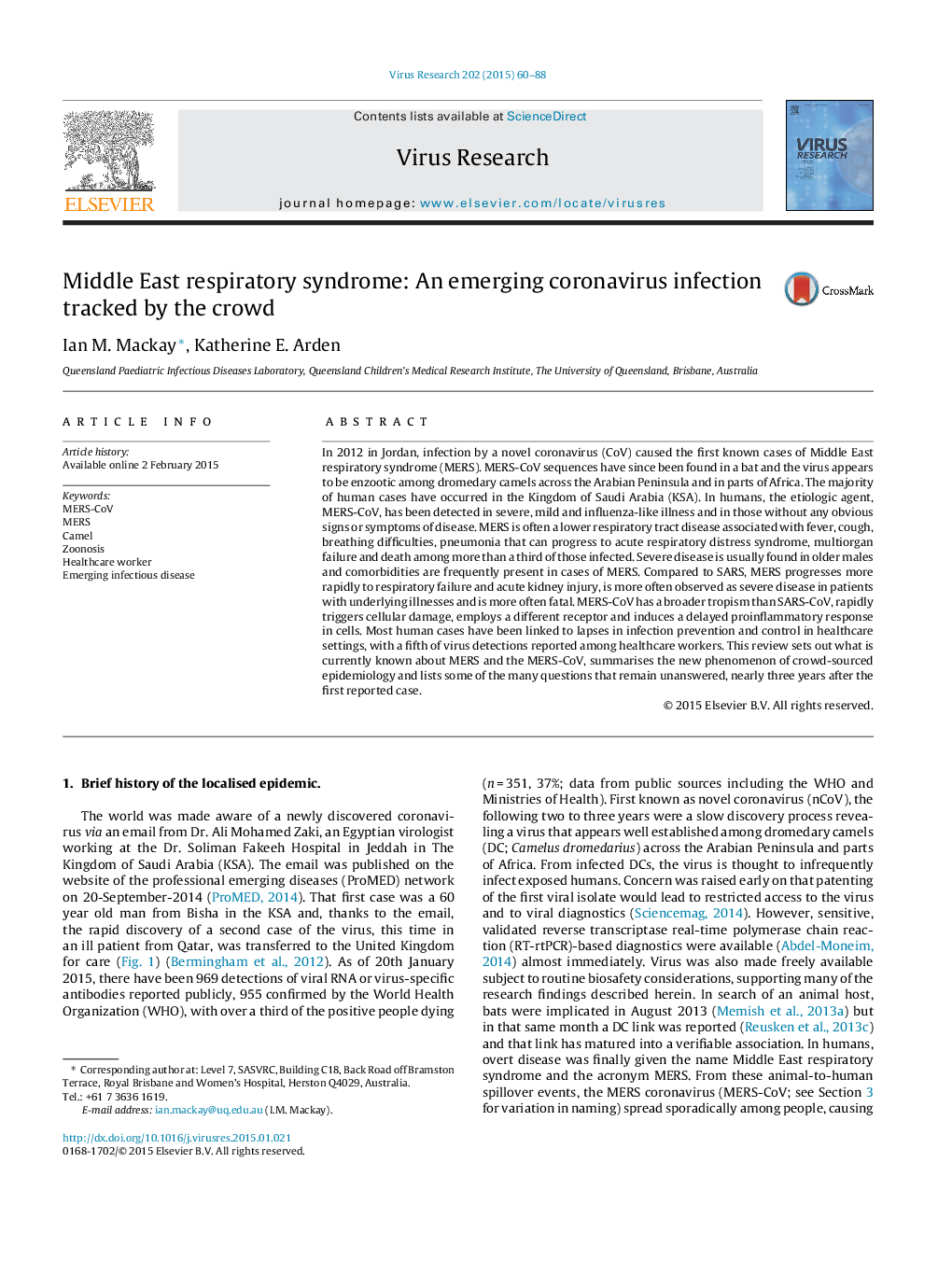| Article ID | Journal | Published Year | Pages | File Type |
|---|---|---|---|---|
| 3428214 | Virus Research | 2015 | 29 Pages |
•Middle East respiratory syndrome coronavirus (MERS-CoV) is a severe, mild or subclinical infection.•MERS is most severe among older men with comorbidities.•MERS-CoV appears to be enzootic in camels throughout the Arabian peninsula and parts of Africa.•MERS-CoV transmission occurs between humans and rare zoonotes.•MERS cases often associated with hospitals and lack or absence of infection prevention and control.
In 2012 in Jordan, infection by a novel coronavirus (CoV) caused the first known cases of Middle East respiratory syndrome (MERS). MERS-CoV sequences have since been found in a bat and the virus appears to be enzootic among dromedary camels across the Arabian Peninsula and in parts of Africa. The majority of human cases have occurred in the Kingdom of Saudi Arabia (KSA). In humans, the etiologic agent, MERS-CoV, has been detected in severe, mild and influenza-like illness and in those without any obvious signs or symptoms of disease. MERS is often a lower respiratory tract disease associated with fever, cough, breathing difficulties, pneumonia that can progress to acute respiratory distress syndrome, multiorgan failure and death among more than a third of those infected. Severe disease is usually found in older males and comorbidities are frequently present in cases of MERS. Compared to SARS, MERS progresses more rapidly to respiratory failure and acute kidney injury, is more often observed as severe disease in patients with underlying illnesses and is more often fatal. MERS-CoV has a broader tropism than SARS-CoV, rapidly triggers cellular damage, employs a different receptor and induces a delayed proinflammatory response in cells. Most human cases have been linked to lapses in infection prevention and control in healthcare settings, with a fifth of virus detections reported among healthcare workers. This review sets out what is currently known about MERS and the MERS-CoV, summarises the new phenomenon of crowd-sourced epidemiology and lists some of the many questions that remain unanswered, nearly three years after the first reported case.
